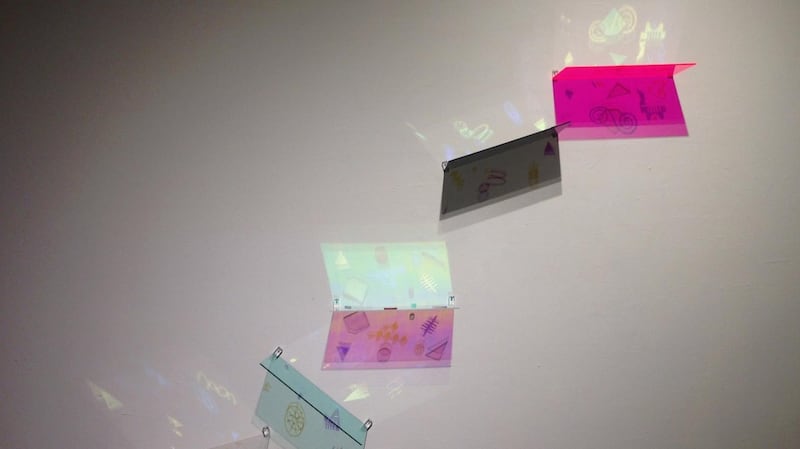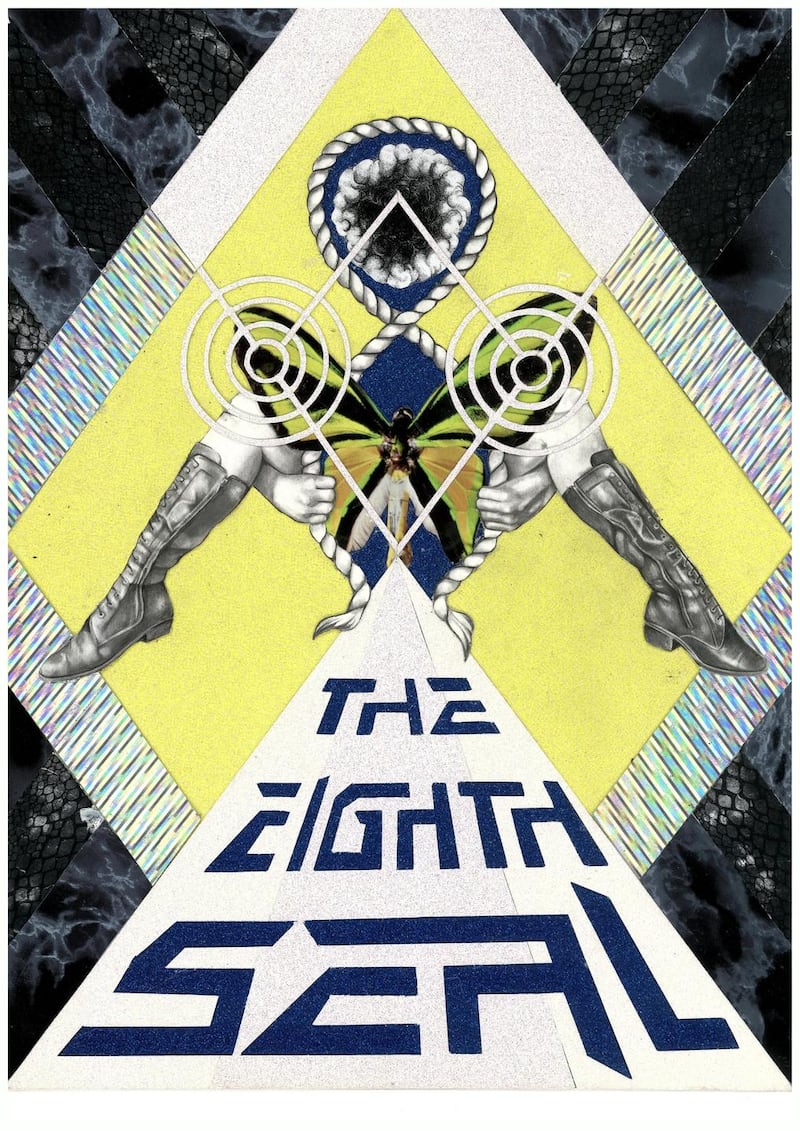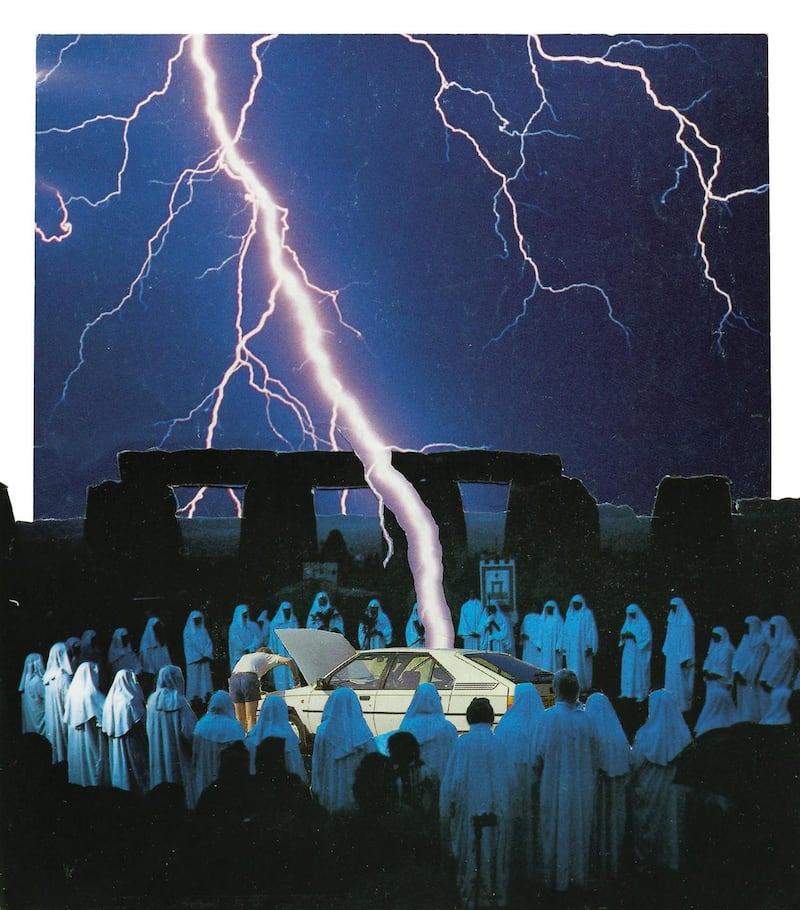The Otherworld Hall
Aoibheann Greenan, Seán Hillen, Seán Lynch, Lucy McKenna, Tadhg McSweeney, Doireann Ní Ghrioghair, Nano Reid
Solstice Arts Centre, Navan, Co Meath
★ ★ ★ ★
Throughout its modest course (not much more than 100km) the Boyne, its tributaries and surrounding lands encompass a rare concentration of sites of historical, archaeological, religious and mythological significance. Highlights in various categories include Tara of the High Kings, that infamous battle near Drogheda, Kells, Fionn Mac Cumhaill hooking the Salmon of Knowledge and the Cistercians’ Mellifont Abbey.
Then, of course, there is the network of monuments known as Brú na Bóinne; Newgrange tends to steal the limelight but Knowth and Dowth are hardly far behind. Apart from this magnificent three, look closely and the landscape is dense with further, smaller monuments.
Curator Sabina Mac Mahon approaches her exhibition The Otherworld Hall at Solstice in Navan with this auspicious context in mind. It is her exhibition in the sense that she invited six artists to take the "convergence of history, archaeology and myth that is present in the Boyne valley's megalithic tombs" as a starting point. Naturally the artists were chosen because she felt their work was innately suited to just those concerns. And she included one historical figure and source of inspiration: Drogheda painter Nano Reid, who knew the terrain intimately.

Reid’s muddy palette and rough-hewn, blocky compositions ground her paintings in the wet earth and the quagmire of history, but they have a winning, almost paradoxical lyricism. Mac Mahon includes just two. They are carefully lit to bring out subtleties of tone and colour, and they blossom in the light. Ancient Land from 1962 sets the scene, while 1973’s Cave of the Fir Bolg gets right down to business. It’s not just the transition from history to myth from one to the next, it’s that there is no progression as such, more a realisation: it’s the same landscape, and Reid was literally tripping over the mythic dimension just by walking in it.
Faith and reason
In her own work, Mac Mahon has long been fascinated by the fault-line between faith and reason, by the way that, faced with evidence that is open to interpretation, human beings ingeniously fabricate convincing narratives that accord with our emotional needs or inherited beliefs. We are born mythmakers. For her approach to The Otherworld Hall, she cites John Waddell's book Archaeology and Celtic Myth on the relevance of pre-Christian Celtic mythology in the interpretation of archaeological remains. Solar cosmology and ideas of an Otherworld are the particular themes addressed by Waddell that Mac Mahon sees as applying to the Boyne Valley.

The implicit suggestion appears to be that we should see the constructed landscape as shaped by belief in the mythic realm as much as or more than by functional or social, ceremonial purposes. It's worth recalling that a major strand of the tourist industry, North and South, is predicated on the public's desire to visit location sites for Game of Thrones, not to mention Star Wars. The real landscape becomes interesting for its transformed role in a film fantasy. But, Mac Mahon could argue, the fantasy was there anyway before the television drama, in the case of the Boyne valley enshrined in an Irish Game of Thrones, medieval narratives based on the story cycles of ancient Irish mythology.
Solstice becomes, for the show's duration, a kind of Brú na Bóinne, an Otherworld mansion. Just down the road the Boyne flows swiftly by, but in the gallery the artists are granted imaginative licence to take us into other dimensions. Back in the early 1990s, Seán Hillen's postcard collages encapsulated just the kind of historical-archaeological-mythological view of Ireland that Mac Mahon is talking about, and strike an interplanetary note that recurs through the exhibition and extends considerably beyond the limits of Solar cosmology. As in Trouble with the Spaceship, Co Meath, which manages to combine space travel with religious ritual, or the John Hinde postcard Children Collecting Meteorites at Knowth.
Aoibheann Greenan creates environments and performances that are "heightened caricatures" of the kinds of cults, rituals and displays that provide exotic tourist entertainment. In The Eighth Seal she presents a scholarly exposition of a secret women's society of that name, extending back to the 15th century and recently revived, incorporating a radically different reading of Sheela-na-Gigs. Conventionally confined to a patriarchal interpretative narrative, they are in fact anthropomorphic renderings of non-human entities called Gigan Aleehs (reverse the spelling). The presumed "exaggerated vulvas" of the Gigans are in fact "magnetic portals" into Otherworlds.
Exaggerated vulvas
Doireann Ní Ghrioghair's Deflated Capitals and Shafts are essentially collapsed, detumescent architectural pillars. In the archetypal western city, the institutional fabric – government, the law courts, banks and academic institutions – assert their enduring authority in a phallic, neoclassical vernacular. But Ní Ghrioghair sees them as dependent on a borrowed, arbitrary aesthetic. She takes plaster casts in latex moulds but, by the time the plaster has set, the forms have imploded and distorted. As ensembles they are visions of dissolved, alternative cities. Empires crumble, she notes, but there is also a hint of something different emerging.

They are also coloured in a light, enlivening way, not unlike the work of Lucy McKenna, who, in her Instruments, goes for broke in the interplanetary stakes and produces speculative systems of communication with extraterrestrial beings, using signs, symbols and colour in pieces made with acrylic, vinyl and light. A Soft Whistling is a particularly good piece. Tadhg McSweeney usually improvises prototypical worlds in his elegant, economically stated sculptures. More, there is often a sense that he is rummaging through the debris of a collapsed civilisation in a bid to make something viable. Here he brilliantly addresses the in-between nature of the Otherworld in a similar spirit.
Cultural archaeology is Seán Lynch's stock-in-trade. Working with Gina Moxley, his Campaign to Change the National Monuments Act lays out the case for the metal detectorists, whose culturally valuable activities have been stymied by the blanket ban framed in the Act. Game over?
- Until December 22nd, solsticeartscentre.ie












